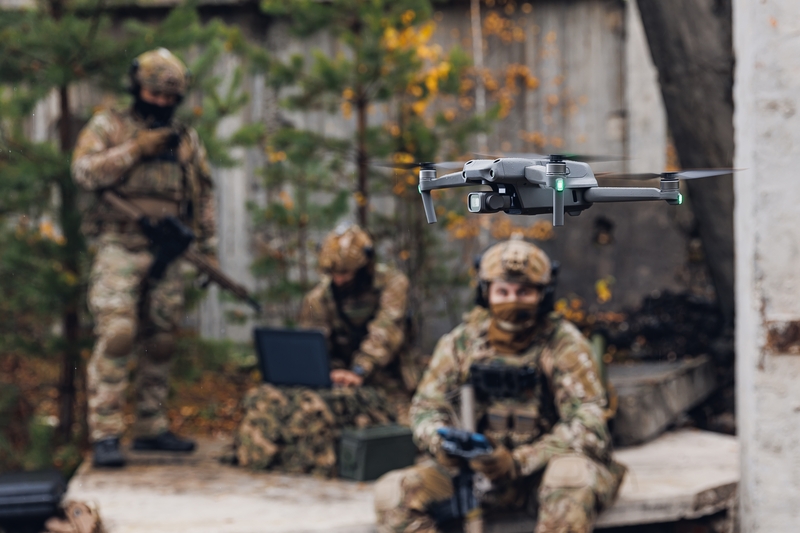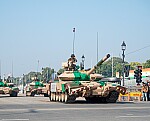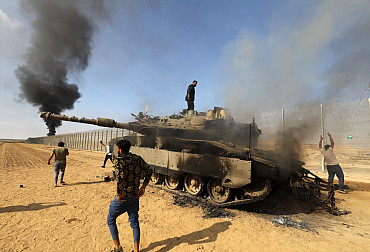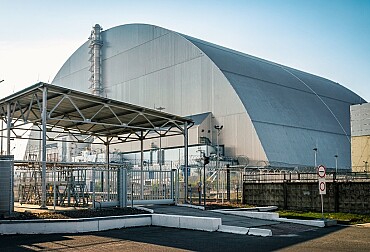A new era of warfare: Autonomous weapon systems and the future of combat operations
In today's rapidly evolving world, where technological innovation is dynamically changing the traditional paradigm, this upheaval is no more evident than in the realm of modern warfare. At the forefront of this change are autonomous swarm aircraft, innovative technological advances that have the potential to reshape the fundamentals of military strategy.
Autonomous swarm drones, by their nature of operating in groups, have the ability to communicate with their 'peers', allowing them to operate as a coherent unit. This ability to act in concert, coupled with the innate adaptability and versatility of individual drones, creates a force that can react quickly to changes on the battlefield.

These drones, developed further with the help of cutting-edge artificial intelligence and space technology, serve as both an energetic presence and a powerful deterrent. The psychological dimension of their deployment is significant: a precisely coordinated autonomous swarm drone not only has the potential to dominate combat scenarios, but can also deter potential aggression or prevent escalation in volatile regions.
The military conflict in Ukraine, triggered by the aggressive and expansionist behaviour of the Russian Federation, has provided insight into the transformative potential of drones, including those that do not operate in groups. Drones have played, and continue to play, a key role in intelligence gathering, reconnaissance, and precision-targeted attacks on selected military targets. Their effectiveness in these roles, enhanced by artificial intelligence and space technology, provides clear evidence that in the world of modern warfare, technological superiority can translate directly into strategic gain.
Related to this are various innovations within China, particularly its development of missiles designed to target high-value military assets, which signal a broader shift in global military thinking. These developments highlight the vulnerabilities associated with an over-reliance on traditional, high-cost military hardware (although the importance of conventional weapons systems has been clearly demonstrated many times on the Ukrainian battlefield) and paint a clear picture: the future lies in the engagement of agile, cost-effective and strategically versatile technologies, embodied, for example, by swarm drones.
Artificial intelligence-based autonomous weapon systems (AWS) have the potential to be weapons of mass destruction, thereby contributing massively to the growing dialectic of fear between terrestrial and space and widespread mass human vulnerability through surveillance and targeting from above. The capabilities and effects of AWS are downplayed on the one hand, but the weapons industry presents these systems as accurate and clean.
Concerns about the use of truly 'responsible' or 'trustworthy' artificial intelligence (AI) also resonate in the public space because, as is well known, with great power comes great responsibility, and the rise of autonomous swarm drones is no exception. The potential of these drones, especially when equipped with lethal capabilities, thus brings with it serious ethical considerations, since decisions that have so far been the responsibility of human soldiers could soon be more or less replaced by algorithms, and this transition requires considerable self-reflection and oversight.
The establishment of 'rules of the game' and legislative frameworks is essential. These frameworks should not only define the rules of engagement for drone swarms, but also ensure that their deployment respects internationally accepted norms and standards. This is particularly important given the transnational nature of many modern conflicts and the global community's interest in preventing unwanted escalations.
As nations around the world come to terms with the strategic imperatives of the modern era, the race to harness the full potential of (not only) autonomous swarm drones will undoubtedly intensify. Early adopters of these technologies may gain a decisive advantage in both direct combat effectiveness and in the broader environment of psychological and hybrid warfare.
It is also important to note that the rise of swarm drones is not an isolated phenomenon. It is part of a broader trend that sees artificial intelligence, robotics, and space technologies merging to create systems that ultimately mean more than the sum of their parts.
While the challenges posed by the rise of autonomous swarm drones are significant, they are not insurmountable. By approaching this new era with a blend of caution, innovation, and collaboration, the global community can ensure that the future of warfare is not only efficient and effective, but also guided by principles that prioritize humanity and peace over wanton destruction and suffering. If harnessed correctly, this synergy can lead to a safer and more stable world where conflicts are less frequent and far less destructive.








